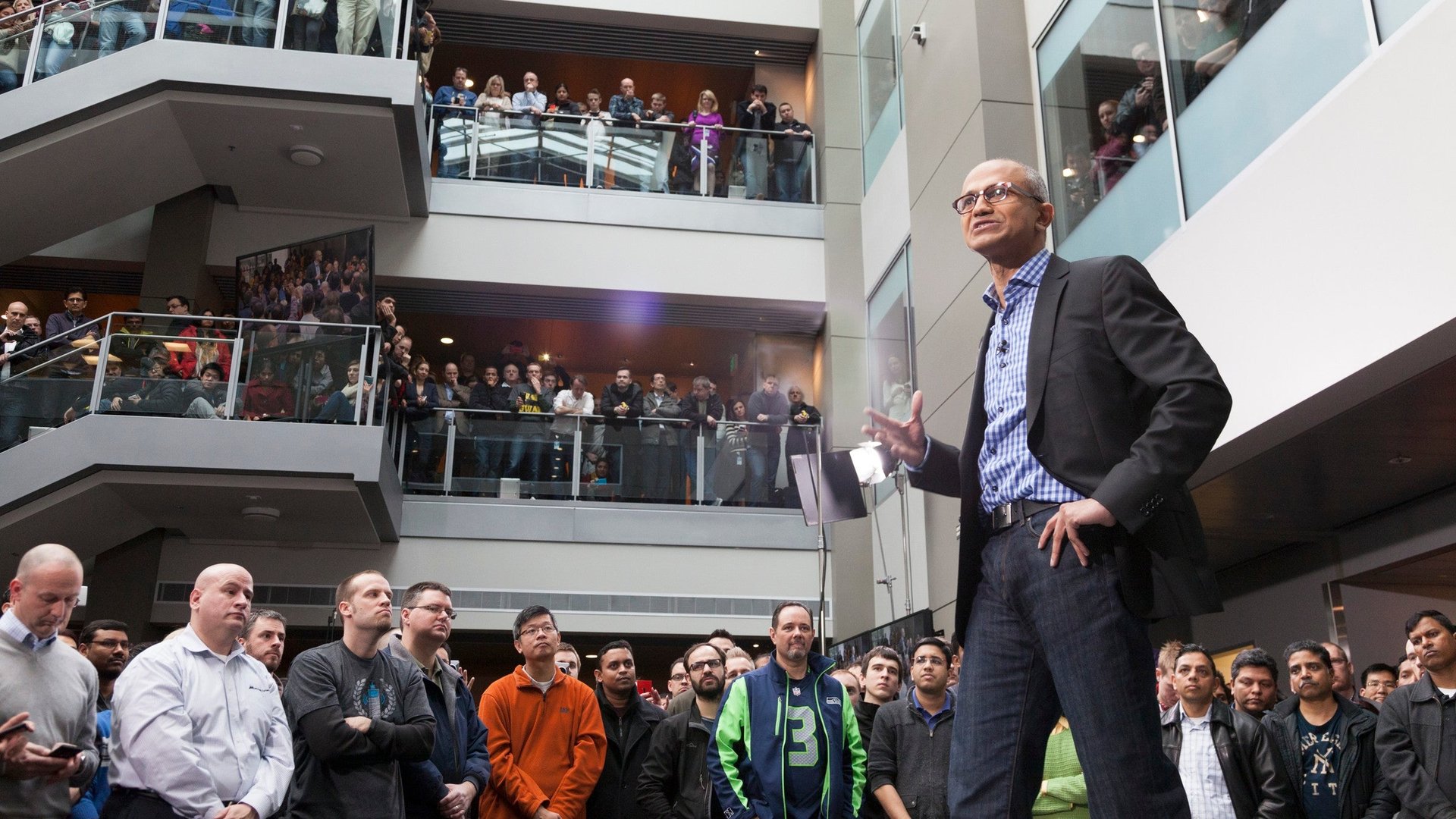Microsoft’s new “worldview” marks a complete change from what made it huge in the first place
Microsoft finally, truly realizes it must change. In a manifesto published today, new CEO Satya Nadella lays out a sweeping plan for the company, starting with the line: “We live in a mobile-first and cloud-first world.”


Microsoft finally, truly realizes it must change. In a manifesto published today, new CEO Satya Nadella lays out a sweeping plan for the company, starting with the line: “We live in a mobile-first and cloud-first world.”
That might seem obvious to anyone who’s been paying attention. And Nadella has already made the point in public a few times since being appointed in February. But it’s a completely different vision to the one that has powered Microsoft for the last few decades.
We’ve emphasized the important phrases from Nadella’s section, titled “Our Worldview.”
We live in a mobile-first and cloud-first world. Computing is ubiquitous and experiences span devices and exhibit ambient intelligence. Billions of sensors, screens and devices – in conference rooms, living rooms, cities, cars, phones, PCs – are forming a vast network and streams of data that simply disappear into the background of our lives. This computing power will digitize nearly everything around us and will derive insights from all of the data being generated by interactions among people and between people and machines. We are moving from a world where computing power was scarce to a place where it now is almost limitless, and where the true scarce commodity is increasingly human attention.
Microsoft’s amazing first life was as a company serving the PC- and documents-based world that it invented. Its Windows operating system and its Office software generated the vast majority of its sales and profits.
Fifteen years ago, for example, Windows and the “productivity platforms and developer” segment generated 87% of Microsoft’s June-quarter sales and more than 100% of its operating profit, according to company earnings reports. Five years ago, even as rivals like Apple started to surge in the mobile revolution, Windows and Office still represented almost 60% of Microsoft’s June-quarter sales and effectively all of its profits. (Microsoft now reports its segments in a different way that makes comparisons more difficult.)
It’s clear to everyone—including Nadella, we’re now assured—that the PC- and documents-based phase of the computing universe is over. Windows and Office will eventually fade, or at least morph. Google’s free Android operating system has taken over the mobile universe and permanently changed the mobile OS business model. Mobile app stores like Google’s and Apple’s have sharply driven down the price of software—with the most lucrative perhaps being a subscription service like Microsoft’s Office 365 or Adobe’s Creative Cloud.
Instead, Nadella realizes that Microsoft’s best hope in a world with billions of devices—most of which can’t or simply won’t run Windows—is to tie them together more abstractly. “Microsoft has a unique ability to harmonize the world’s devices, apps, docs, data and social networks,” he says, noting tactically that “our cloud OS represents the largest opportunity given we are working from a position of strength.” Productivity software is important, but it’s not just word processing and spreadsheets. Getting paid a bunch of money to install two software suites is no longer a business model that Microsoft can bet on. So it must change.
Nadella promises more details of Microsoft’s plans on its earnings call next week. Of course, the real work now is the execution—it’s easy to talk about change, but Microsoft must now prove it can, and that will take time and won’t be immediately obvious. There are no guarantees Microsoft will win in this new mobile-first and cloud-first world. But Nadella seems to be moving in the right direction.